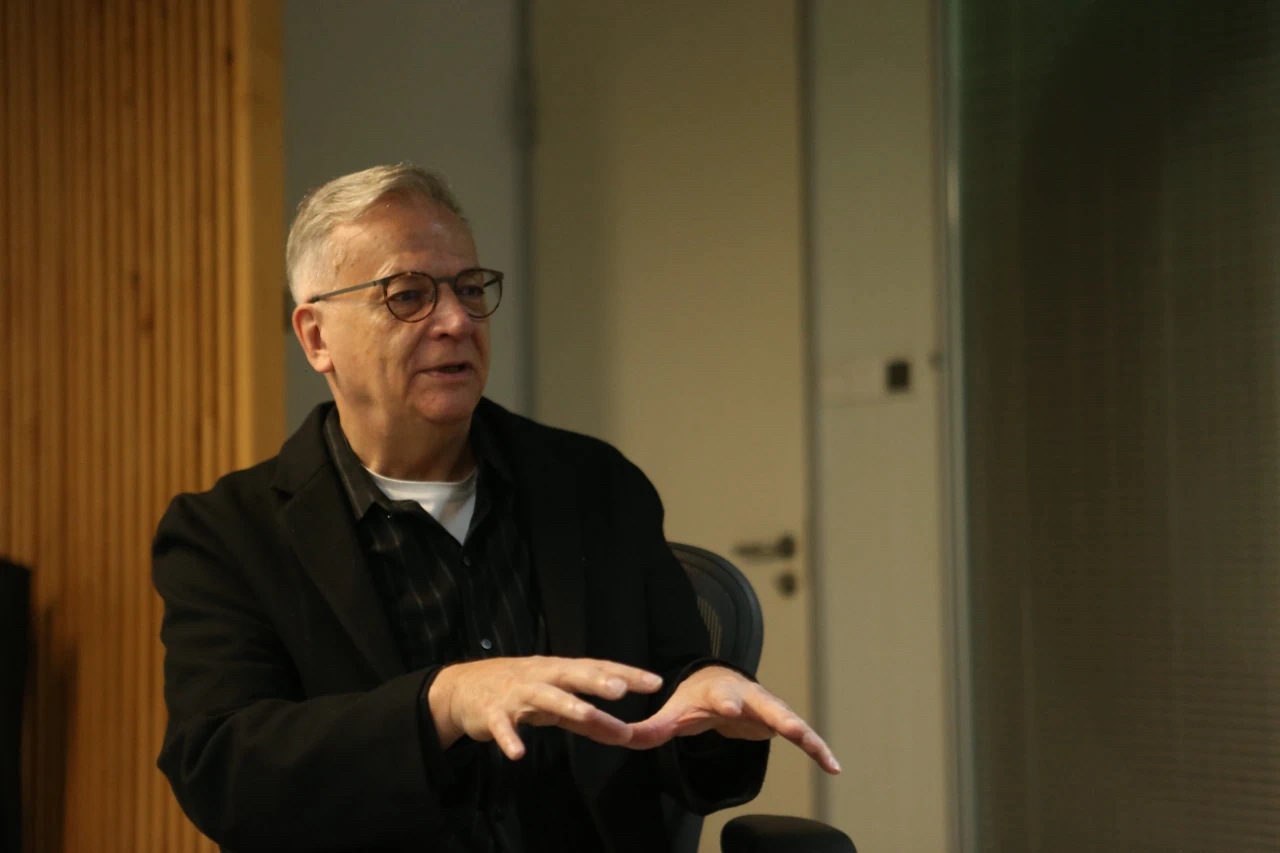By LONG Yun

Professor Tony Brown. (PHOTO: ZHANG Heyan/International Talent Magazine)
Having experienced diverse beauty around the world, Tony Brown, a British artist, shared his perspective on the unique beauty of China. For him, the answer lies in one word: "the people."
For decades, he has been playing an active role in the academic field and international art exchanges. Now, he is the tenured full Professor of the école Nationale Supérieure des Beaux-arts de Paris and the Dean of the EAaD Art and Design School of Xi'an Eurasia University.
An interesting mix of modernity and cultural heritage
“[Recently], Chinese people have evolved but maintain certain parts of their cultural heritage," Brown told Science and Technology Daily, adding that Chinese people develop a collective understanding relative to family and others, which fosters a collaborative environment.
Brown recalled an exhibition experience in Paris that showcased this collaborative spirit of Chinese people. While students from Western countries worked individually, Chinese students systematically helped one another, demonstrating a shared approach that was more efficient and cohesive.
Three years ago, this British artist moved to Xi'an to find more inspiration and promote international educational cooperation. He was impressed by Xi'an's scale, culinary delights, and the enjoyment of life shown by its residents.
He enjoys the city's four distinct seasons and strong cultural background, highlighting the pride of the Shaanxi people in their history and culture. Xi'an remains true to its identity, with its residents embracing and preserving their unique cultural heritage, he said.
For Brown, Xi'an shows a harmonious blend of the modern environment and cultural heritage, which he calls "an interesting mix." He noted that, "There is a strong interest in not just dealing with the past, but also moving forward to embracing certain aspects of technological advances and very progressive thinking."
Adapting to changing trends
When seeing Brown’s artworks, there is a compelling feeling to connect them to the nature of modernism. In fact, Brown was one of the first artists in the early 1980s to produce cutting-edge, technologically oriented installation art. He believes in the power of the combination of art and technology.
As the world undergoes rapid transformation, Brown is cognizant of the significant impact of AI. His foresight extends to the integration of AI into educational programs. Three years ago, he introduced basic coding concepts in the Media Lab and helped students to realize the importance of understanding algorithms, which aims to empower students to navigate the evolving technological landscape and make meaningful contributions to society.
"I think our students have to be prepared for this shift that's going on," Brown said, adding that he believes an inter-disciplinary oriented education will enrich and broaden a student's learning experience.
Brown expresses confidence in China's readiness for this shift, citing the government's initiatives to regulate AI responsibly within the cultural context.
Reflecting on his experiences in China, Brown acknowledged the country's remarkable progress in becoming a technological powerhouse. He applauds the younger generation's agility in becoming "technology literate," a transformation that positions China at the forefront of the digital revolution.
Looking ahead, Brown said he will remain dedicated to his artistic practice and teaching endeavors. Having recently exhibited in Shenzhen and lectured in Shanghai, he cherishes the privilege of teaching at a university, especially engaging with the vibrant energy of young minds.
This article is also contributed by Xi'an Eurasia University.
The trio will conduct a series of experiments in fields such as life science, fluid physics, combustion science and materials science. Notably, this is the first time that fruit flies have been taken on a Chinese space mission as experimental subjects. What made scientists choose fruit flies? What experiment will they undergo?
